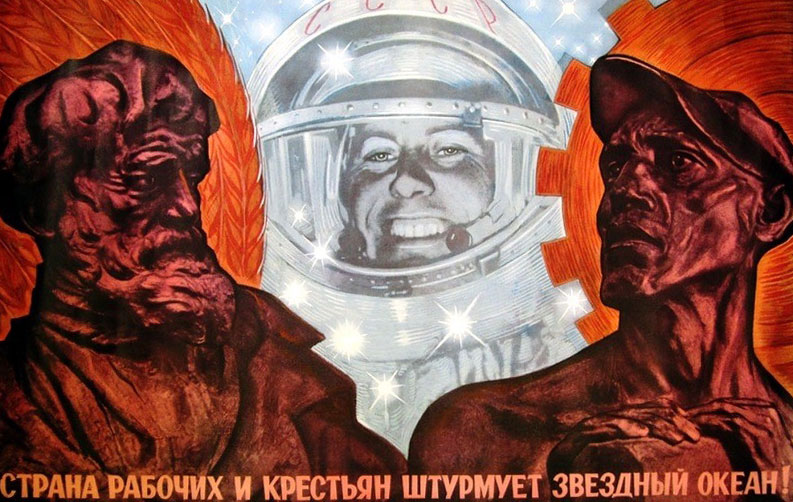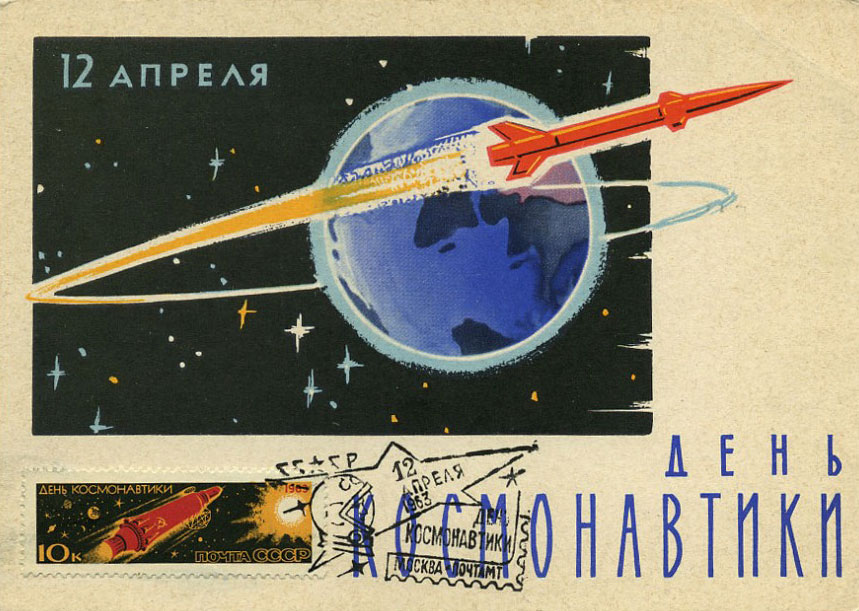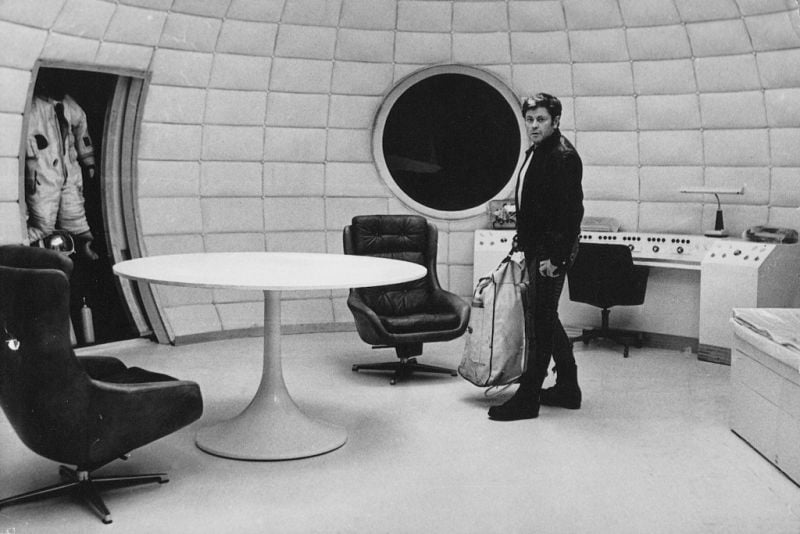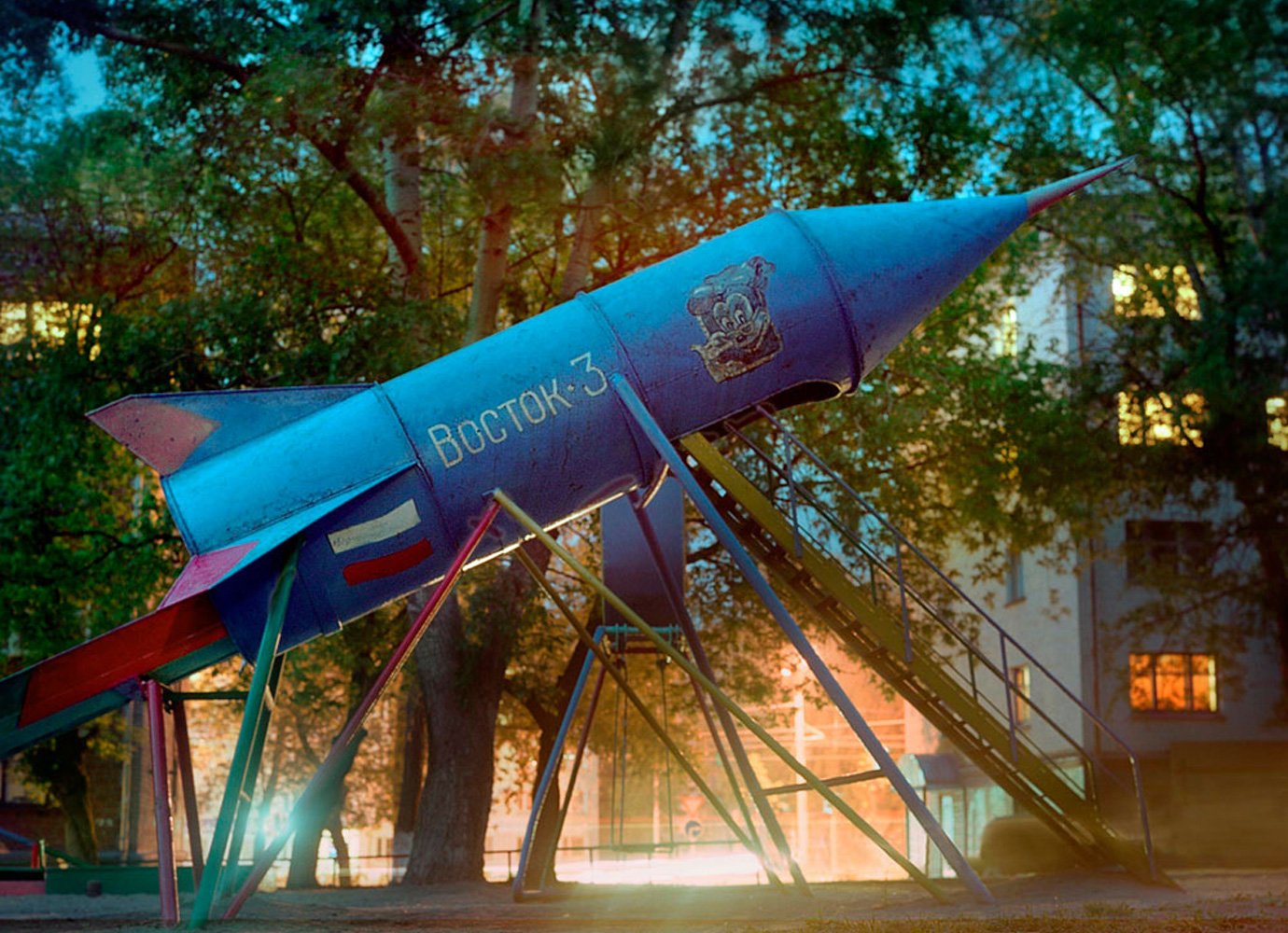Cult of the cosmic: how space travel became the unofficial religion of the USSR
Soviet Space DreamsHow Soviet faith in space became bigger than God
The cult of science and space exploration in the Soviet Union was as close as to religion as you could get in an atheist state. Unfortunately it ended up being one of the few positive trends that disappeared with the collapse of communism.
April 12 is International Space Day and this year that date coincided with the Russian Orthodox Easter Sunday. Religious celebrations on TV and on the streets overshadowed the ones dedicated to the day of the first manned space flight. The internet reacted fast with the Easternautics Day (Den Paskhonavtiki) meme, in which Gagarin’s face was painted on a kulich, a round sweet Easter bread, and surrounded by eggs painted with pictures of the International Space Station, Vostok-1 and other spaceships. Many people expressed disapproval that the day of a great scientific breakthrough was being superseded by a religious holiday.
For most of the 20th century it was the other way round, with the thirst for space exploration replacing religion, with its own cult of science disseminated through propaganda not sermons. Yuri Gagarin was the cult’s ultimate God-like symbol, a man of the people and a martyr who died too young in mysterious circumstances. The Gagarin monument in Moscow, created by sculptor Pavel Bondarenko from titanium, and unveiled in time for the 1980 Moscow Olympics, features a 42-metre column topped with a figure of Gagarin, rocketing to the sky in a pose similar to Rio De Janeiro’s Christ the Redeemer. Other revered icons included Valentina Tereshkova, the first female cosmonaut, Alexei Leonov, the first astronaut to do a spacewalk and rocket engineer Sergei Korolev. Often party leaders and theorists of communism were also thrown in, with the logic that scientific progress would be impossible without them — this was usually the part ignored by a general public long used to seeing party leaders in places they didn’t belong.
We had made it to the stars and, as the saying went, “there was no bearded old God there”. Only science. Only the Soviet system
The space programme was presented as the result of the great work of the proletariat. The Moon, a 1965 film by Pavel Pavel Klushantsev, presents a future in which Soviet people live a life of peace and progress on the colonised moon, thanks to the technological advances capable under communism. We had made it to the stars and, as the saying went, “there was no bearded old God there”. Only science. Only the Soviet system.
Space themes were woven into everyday life, into endless festivals and celebrations of stellar exploration. Children’s playgrounds were designed like rockets, the walls of schools and kindergartens decorated with paper spacecraft and stars. Houses were built to look like spacecraft, lunar stations and flying saucers — to this day, experts refer to the 1960s-80s as the “cosmic period” in Soviet architecture. Legions of artists produced postcards and posters that were regularly released to commemorate anniversaries and new developments. Their images came labelled with pompous captions like “Communists pave the way to the stars”, “The country of workers and farmers conquers the stellar ocean” and “Science and communism are inseparable”.
To further the propaganda drive, space exploration was also deeply embedded in popular culture. There were novels and short stories by authors like Kir Bylichev, Chinghiz Aitmatov and the Strugatsky brothers, and many of the books were made into films including the Tarkovsky classics Stalker and Solaris. The 1985 TV miniseries Guest From the Future and the 1981 film Per Aspera Ad Astra (also known as To the Stars the Hard Way or Humanoid Woman), both based on Bylichev’s novels, enjoyed great success in the Soviet Union and are still frequently screened today.
Children were a key target of propaganda with space-themed films and cartoons cranked out for a younger audience
Even the works of foreign authors who had no intention of promoting the regime were co-opted into service. Science fiction writer Ray Bradbury’s short story Here Be Tygers was was made into a 10-minute cartoon in 1989, and Isaac Asimov’s novel The End of Eternity transformed into a surreal two-part cyberpunk saga in 1987.
Children were a key target of propaganda with space-themed films and cartoons cranked out for a younger audience. Movies like The Mystery of the Third Planet, a 1981 animated feature film about a space mission to purchase rare animals from other planets for the Moscow Zoo, were instant hits. Other cartoons such as Murzilka On a Sputnik (Murzilka Na Sputnike), In The Thirtieth Century (V Tridesyatom Veke) and Novels About Space (Novelli O Kosmose) took simple adventure plots and placed them in space, sometimes alongside a healthy dose of concealed ideology.
Pop songs also followed suit, with the extra-terrestrial proving a popular theme for many bands. Perhaps the most famous cosmos-themed anthem is “Trava U Doma” (Grass By My Home), performed by a group appropriately called Zemlyane (Earthlings). Even though the lyrics talk about astronauts in space longing for their home back on Earth, the song has become the ultimate soundtrack for space-themed events, an enduring symbol of the Soviet craving for intergalactic travel. Many other songs were written for films and the stage, some of them, again, taking the conversation to a religious level. In the song “My Friends, I Do Believe”, by Vladimir Troshin, belief has nothing to do with God and a lot to do with the Soviet people conquering space.
Many of the records were written by Evgeniy Dolmatovskiy, one of the USSR’s most prolific space minstrels, writing classics like “I, Earth, am Seeing off my Nurslings” and “And the Apple Trees will Bloom on Mars”. His song “The Motherland Listens” is also said to be one of Yuri Gagarin’s favourites. Legend has it that Gagarin sung it while circling the Earth in Vostok-1.
Soviet space propaganda was simultaneously utopian and cynical, an authoritarian regime looking for a new environment to fill with ideology. With the end of the empire, official enthusiasm for the extra-terrestrial invariably withered. Today, despite occasional political nostalgia for the USSR, the cult of science is a thing of the past. Russia’s recent problems with space technology only underscore its demise; this May, two Russian spacecraft, an unmanned cargo spaceship and a Proton-M rocket carrying a Mexican satellite plunged to Earth within a week of each other, after they both experienced malfunctions. The Russian space programme is no longer in a position to brag.
In truth, the ideological message of space propaganda often passed people by at the time. Karl Marx, who coined the concept of religion as an opiate, might have frowned on the love of space as another illusory belief. Then again, it’s important to understand the context in which he was writing. In Marx’s time, opium was often used an anaesthetic, and the drug’s association with an escape from reality was less prominent. The full quote explains this further: “Religion is the sigh of the oppressed creature, the heart of a heartless world, and the soul of soulless conditions. It is the opium of the people.” And truly, that’s what the Soviet people’s longing for the cosmos was — the sigh of the oppressed people and the wish to escape to a better world, even if it meant having to leaving the old one behind.










